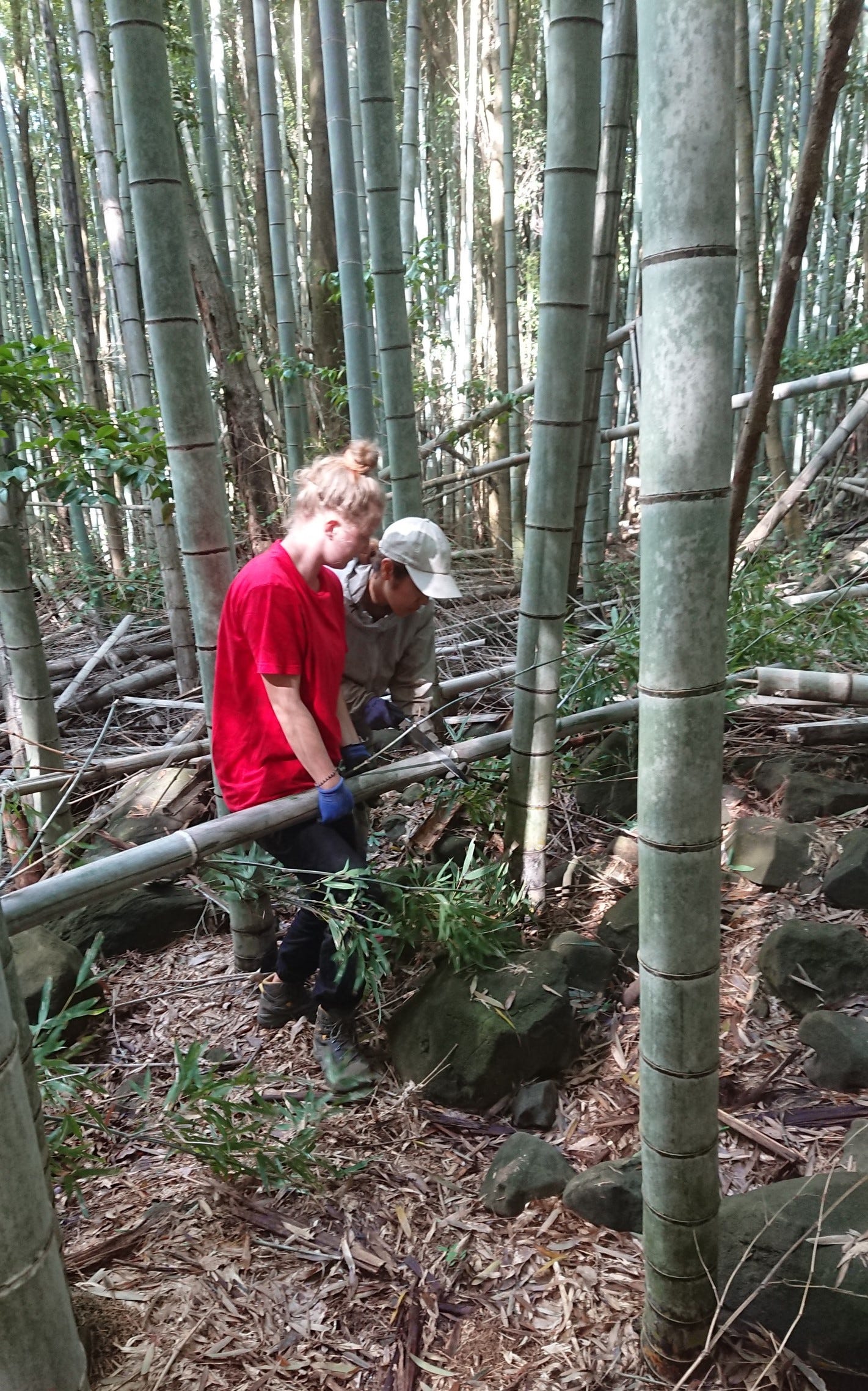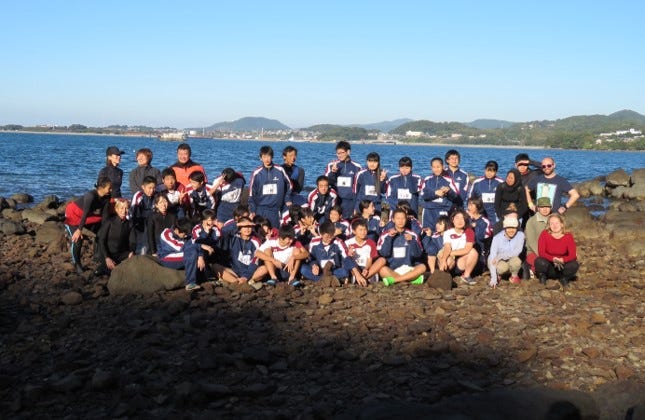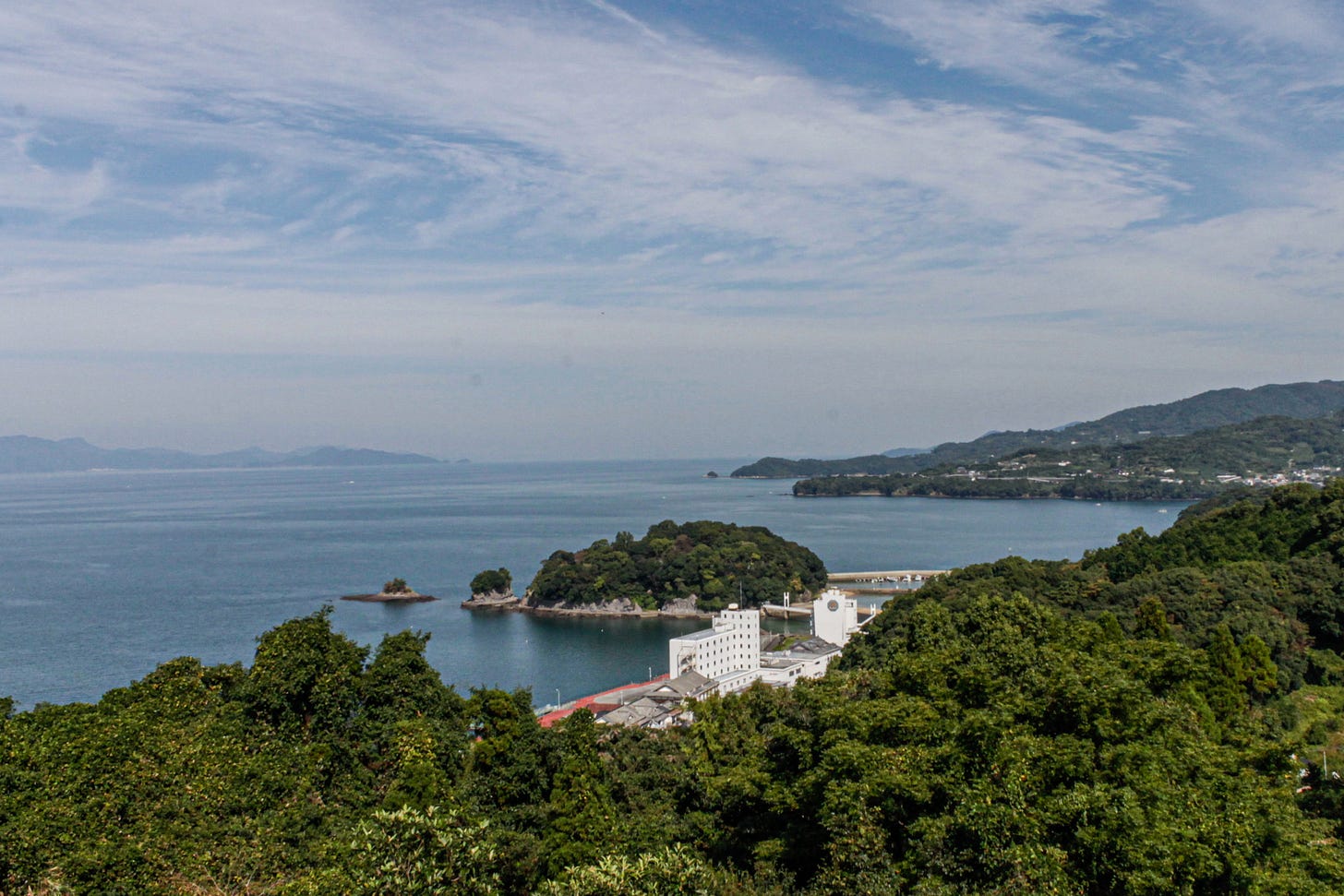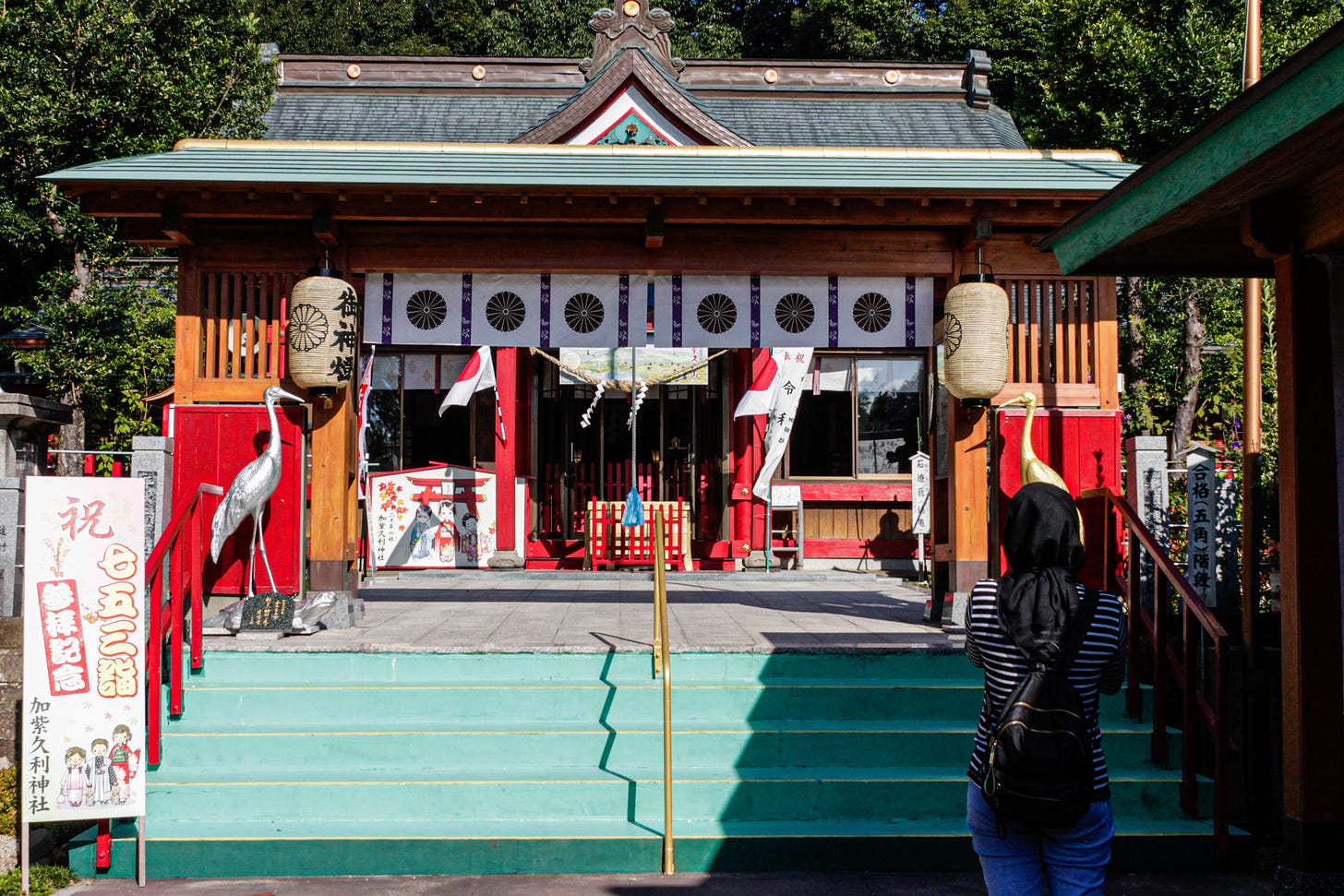From Tokyo, I went to Minamata on Kyushu Island in the south of Japan, where I participated in a 2-week volunteer camp. Minamata is known globally for the tragic environmental disaster that occurred in the mid-20th century. In the 1950s, the city became the epicenter of one of the most notorious cases of industrial pollution, caused by the release of methylmercury into the waters of Minamata Bay by a nearby chemical factory. This pollution led to the outbreak of Minamata Disease, a neurological syndrome characterized by severe mercury poisoning, affecting thousands of residents and causing devastating health consequences, including neurological damage, birth defects, and death.
The Minamata Disaster raised international awareness about the dangers of industrial pollution and spurred significant changes in environmental regulations and corporate responsibility worldwide. The city has since undergone extensive cleanup efforts and initiatives to mitigate the long-term effects of mercury contamination. Despite its tragic history, Minamata has also become a symbol of resilience and the importance of environmental stewardship, with ongoing efforts to preserve its natural beauty and promote sustainable development. There is a movie titled Minamata, that tells the story of what happened in the city through the experience of photographer Eugene Smith (played by Johnny Depp in the movie). I suggest you check also his pictures.
I remember that when I was in Tokyo and I was telling people I was on my way to Minamata, they were asking me “Why?”, one because it is the countryside and two because there is still a stigma about the city, my friend Shinji, during our dinner together confirmed this.
If you are interested in Japan's countryside or off-route places check
, he takes amazing pictures and he knows a lot about Japan.Knowing the city's history, you can guess that the topic of the volunteer camp was environmental awareness and climate change. We were 6 volunteers from Switzerland, Netherlands, Russia, Indonesia, Italy and Japan, working 6 days a week, 3 days full time and 3 days half-time. Our main volunteer work was collecting bamboo in the way to produce charcoal.
Bamboo charcoal possesses several unique properties that make it a valuable material. It has natural antibacterial and antimicrobial properties, which makes it suitable for use in water filtration systems, skincare products, and wound dressings. Bamboo charcoal burns slowly and steadily, and compared to traditional charcoal or wood, bamboo charcoal emits minimal smoke making it a cleaner fuel option. It contains various minerals and nutrients that are beneficial for plant growth.
The other volunteering activity we did was to go to a junior high school and support their eco-program, this was done on Saturday mornings and in one afternoon on weekdays. We were helping the teachers, practising English with the students, and one day we went to clean a shore together.
We stayed in Fukuro, a district of Minamata, which is surrounded by scenic mountains and lush greenery, it offers a tranquil retreat amidst nature's beauty. It is known for its agricultural produce, with farms cultivating fresh fruits, vegetables, and rice.
Our accommodation was a guest house, the typical Japanese house you see in animes, a wooden house with sliding doors and tables with short legs. I loved staying in that house with the neighbouring community participating in different activities. Twice a week we rehearsed for a dance because we had to perform at the opening of a local festival. We had some dinners together, and once during the festival, we ate and drank together inside a temple. This was the part that I liked the most about this experience, being immersed in the community and sharing traditions and cultures, in that situation the language barrier was overcome by the will to share and learn from each other.
We moved around Fukoro by bike. The sea was very close and we went there almost every day to enjoy the landscape and relax. I went running sometime near the sea.
In this camp, I met my friend Tami, a girl from Indonesia, with whom I visited Fukuoka after the camp, and last December we met again in Singapore. On the days off we were usually cycling and discovering places around Minamata. Once we did around 50 km by bike to reach Osako Island, a small island located off the coast of Minamata, known for its beauty, and tranquil atmosphere.
On the way to Osako Island, we stopped several times to enjoy the beautiful views of the coast. What I liked from this trip is how much nature you can find in Japan, usually, we associate Japan with Tokyo and skyscrapers, but it is more than that.
The heart of Minamata is the Eco Park, a testament to the city's commitment to environmental preservation and sustainable development. This beautiful park by Minamata Bay is peaceful, with lots of greenery and lovely views.
In addition to its natural attractions, Minamata Eco Park features educational exhibits and interpretive displays that highlight the importance of environmental conservation and the ongoing efforts to restore and protect Minamata Bay. Visitors can learn about the history of the Minamata Disease tragedy, as well as the innovative measures being taken to mitigate pollution and promote sustainable living practices.
Tea is a tradition in Japan, and the welcoming ritual is always with it. One day we went to the tea festival organised in the Minamata Eco Park. Paying an entry fee you get a cup and with that, you can taste several different types of teas in the many stands at the festival.
It was a sunny and beautiful day for drinking different types of tea and eating green tea ice cream in the park, we also met the mascot of the Eco park. Of course, it was possible to buy the teas of the tasting, but also sweet and salty snacks.
On another free day, Tami and I biked to Izumi, a city located in Kagoshima Prefecture. One of Izumi's most famous landmarks is Izumi Crane Migration Grounds, where visitors can witness the breathtaking spectacle of thousands of cranes gathering during the winter months, unfortunately, it wasn’t the right period to see this phenomenon.
We first visited the Kashikuri Shrine, a revered Shinto shrine with deep historical and cultural significance. The Kashikuri Shrine is dedicated to the worship of Amaterasu Omikami, the sun goddess, and other deities associated with agriculture and prosperity.
Kashikuri Shrine's architecture reflects traditional Japanese Shinto design, with striking vermilion-coloured buildings, intricately carved wooden elements, and sacred torii gates marking the entrance to the shrine grounds. We explored the shrine's tranquil grounds, strolled along the pathways, and admired the serene beauty of its surroundings.
After this visit we went to Fumoto, a district within Izumi, renowned for its well-preserved samurai houses, offering a glimpse into Japan's feudal past. These traditional residences were once inhabited by samurai warriors and their families during the Edo period (1603-1868).
The samurai houses in Fumoto feature distinctive architectural elements, including wooden structures with thatched or tiled roofs, sliding paper doors, and tatami mat flooring. These residences are typically surrounded by tranquil gardens, stone walls, and protective moats, reflecting the status and lifestyle of the samurai class.
We visited these historic homes, which have been meticulously preserved and converted into museums or cultural attractions. Inside, there are traditional artefacts, samurai armour, weapons, and household items, an insight into the daily lives and customs of Japan's warrior class.
We visited two houses, inside you can find guides who can help you with the visit. In the first one, the lady didn’t speak English but with Google translator she gave us a lot of information, adorable! With the same ticket, we visited a samurai museum, with a rich collection of artefacts, weapons, armour, and historical exhibits that provide insight into the life and culture of the samurai warriors.
On a Sunday morning, I was invited to an activity where the kids of the school I was volunteering were participating in, a sumo competition, but I will tell you about it in the next post.
See you soon,
Flavio

































I only knew Minamata from the work of W. Eugene Smith and i saw the movie a few months ago. Very interesting to read about how the place has evolved after the disaster. Thanks!
Thanks for the film recommendation and all sorts of new info to expand my understanding of Japan!